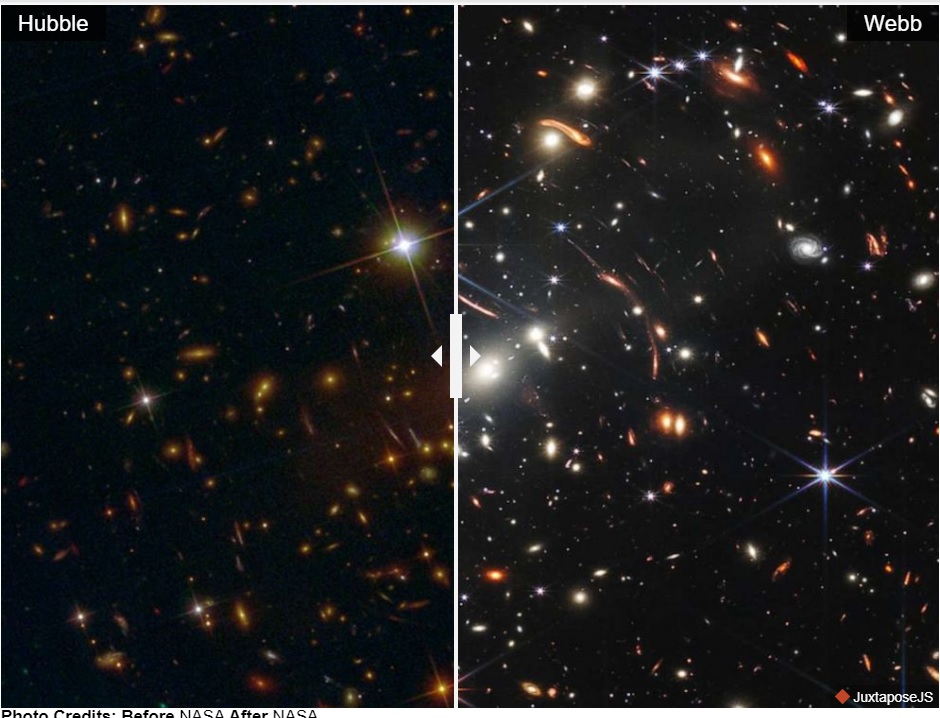
Exploring the Universe’s Secrets: The James Webb Telescope vs. Hubble
Peering into the depths of space, each new telescope brings with it the promise of unveiling previously unseen wonders of the cosmos. With the recent launch of the James Webb Space Telescope (JWST) launched on December 25, 2021, the astronomical community is abuzz with excitement, eager to witness the celestial marvels it will reveal. But what sets the James Webb Telescope apart from its predecessor, the Hubble Space Telescope? Let’s dive into the five biggest differences between these two groundbreaking instruments.
- Infrared Vision: One of the most significant disparities between the James Webb Telescope and the Hubble is their respective abilities to observe infrared light. While the Hubble primarily operates in the visible and ultraviolet wavelengths, the JWST is designed specifically to detect infrared radiation. This capability allows the James Webb Telescope to peer through cosmic dust clouds, revealing hidden star-forming regions, and even observe the earliest galaxies that formed shortly after the Big Bang.
- Larger Mirror: Size matters in the world of telescopes, and the James Webb Telescope boasts a significantly larger primary mirror than the Hubble. With a diameter of 6.5 meters (21 feet), compared to Hubble’s 2.4-meter (7.9 feet) mirror, the JWST can gather more light and achieve higher-resolution images. This increased light-gathering power enables the James Webb Telescope to observe fainter and more distant objects with unparalleled clarity.
- Sunshield: Unlike the Hubble, which orbits relatively close to Earth, the James Webb Telescope will reside at the second Lagrange point (L2), approximately 1.5 million kilometers (932,000 miles) away. To protect its delicate instruments from the Sun’s heat and radiation, the JWST is equipped with a revolutionary sunshield. This five-layered, tennis court-sized shield will keep the telescope’s temperature at a frigid -233 degrees Celsius (-387 degrees Fahrenheit), allowing it to maintain its infrared sensitivity and achieve unprecedented observational precision.
- Origins and Early Universe: While the Hubble has provided invaluable insights into the universe’s evolution, the James Webb Telescope is poised to delve even further back in time. By peering deep into space and observing the light from the universe’s infancy, the JWST will help astronomers unlock the secrets of how the first stars and galaxies formed. With its infrared capabilities, the James Webb Telescope will pierce through cosmic fog, offering glimpses of cosmic dawn and shedding light on the origins of our cosmic home.
- Exoplanet Atmospheres: Another frontier where the James Webb Telescope will excel is the study of exoplanet atmospheres. While the Hubble has made groundbreaking discoveries in exoplanet research, such as detecting the presence of atmospheres and even identifying specific molecules, the JWST will take this field to new heights. By analyzing the faint signatures of starlight filtered through exoplanet atmospheres, the James Webb Telescope will provide unprecedented insights into the composition, temperature, and even the potential habitability of distant worlds.
In summary, while the Hubble Space Telescope has revolutionized our understanding of the cosmos over the past three decades, the James Webb Space Telescope represents a quantum leap forward in observational capabilities. With its infrared vision, larger mirror, advanced sunshield, focus on the early universe, and enhanced exoplanet studies, the JWST is poised to rewrite the textbooks of astronomy and uncover the universe’s deepest mysteries. As astronomers eagerly await the first images and discoveries from this groundbreaking telescope, one thing is certain: the James Webb Space Telescope will inspire generations to come and ignite our collective curiosity about the cosmos.

